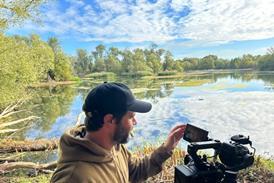Handling, storing and archiving data is now more crucial than dealing with tape. In this area, broadcast has matured a lot more than post and production. Broadcast is all about server-based operations.
From a broadcaster point of view, according to Dr Sue Farrell, head of architecture at Red Bee Media, metadata is the big concern.
“The key to efficient automation is the use of metadata that describes the programmes to create and drive media management and distribution workflows,” explains Farrell. “Many of the other elements such as editing or storage are increasingly becoming interchangeable commodities.”
While producers, such as Richard Jukes, managing director or Ground Up media, a production and distribution company for digital platforms, face massive storage issues. He says: “I'm now buying terabyte drives for a couple of hundred quid and arching those as tapes. Which is much better as you save the project on the same drive and you can just spit it out into a different file types if you want to.”
Although it doesn't have a stand, Apple, with its Xsan 2 and Final Cut Server, is making some interesting advances. The MultiSAN feature of Xsan 2 gives simultaneous access to multiple volumes hosted by separate controllers.
Final Cut Server, unveiled last year but only now released to the market, is an asset management application that promises the ability to track 100 different file types, offers sophisticated workflow automation and, obviously, integrates with Final Cut Studio.
EditShare will show its Avid and Apple Final Cut Pro project-sharing capabilities and the EditShare Field, a portable shared storage box that is ideal for field production and news teams out on location.
EVS, famous for its live slo-mo machines, is showing the latest version of the XT[2], the first production server to natively support both Avid DNxHD and Apple ProRes 422 codecs.
Jon Anthony, director of technology at Portland TV, reckons the new enhancements will speed things up significantly. “As it is recording, everything becomes available to both Avid and Final Cut. We record four streams and at the moment we're trying to select relevant bits. Now we should be able to choose them straight off the EVS.”
Globalstor has a new ExtremeStor-DI REDe, which is for use with the Red One camera. When equipped with Assimilate's Scratch, producers and directors can view what was captured and also apply colour grades directly to the footage and make adjustments at 24 frames per second.
At a slightly different end of the scale, Bright Systems has its Brightdrive Transportable, which is a Firewire replacement for people who are throwing large amounts of data around. At less than $2,000, it offers 2TB of storage on up to four drives inside a convenient caddy.
With the ability to hold and offload full-length motion pictures at speeds up to 20 times greater than standard Firewire, it will be a particularly pleasant purchase for anyone who has ever spent all day shooting and all night transferring footage.
MC Patel believes the beauty of that product is that you can load or unload data very quickly.
He says “We're not saying that firewires won't be used anymore what we're saying is that when you've got significant projects going on and efficiencies are required then you will lean towards something like this. It's one of those things where increasingly we use consumer technology for professional applications. What this does is that it packages it in such a manner that it is robust and reliable.”
Finally, broadcasters are being urged to give Quantel's Dino a look. According to the manufacturer, it is going to be “the most exciting new broadcast technology at the show”.
All that is known so far is that Dino enables content to be shared and moved across the world as part of the production process. If it can also transport you back from Las Vegas in under 10 hours, so much the better.
More NAB stuff
EditingStereoscopic 3DTapeless camerasStorage and WorkflowsDigital IntermediateEditor's pick


























No comments yet